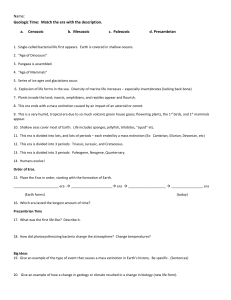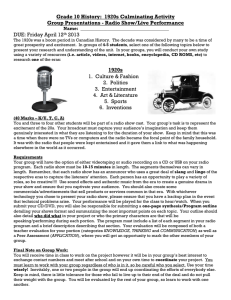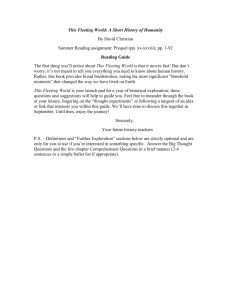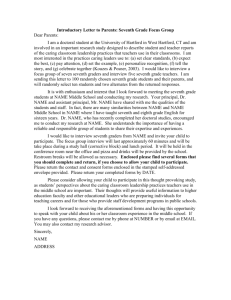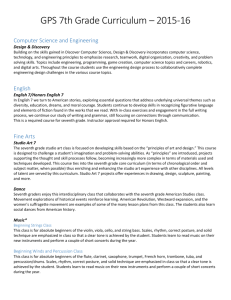Sixth Grade Social Studies Curriculum Development
advertisement
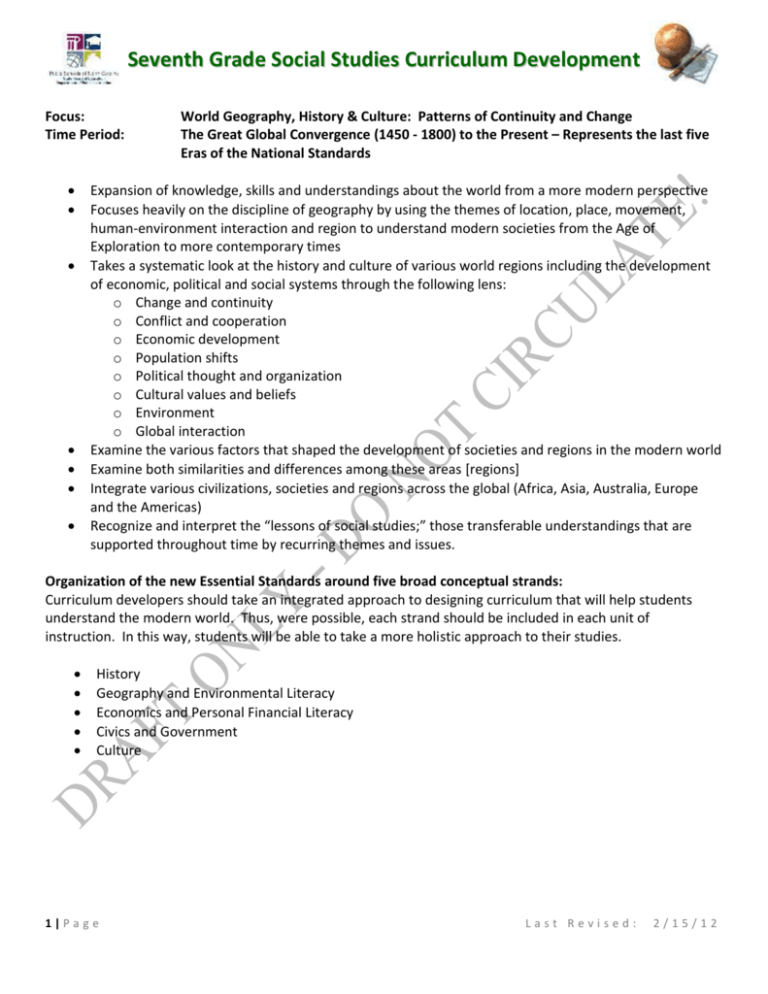
Seventh Grade Social Studies Curriculum Development Focus: Time Period: World Geography, History & Culture: Patterns of Continuity and Change The Great Global Convergence (1450 - 1800) to the Present – Represents the last five Eras of the National Standards Expansion of knowledge, skills and understandings about the world from a more modern perspective Focuses heavily on the discipline of geography by using the themes of location, place, movement, human-environment interaction and region to understand modern societies from the Age of Exploration to more contemporary times Takes a systematic look at the history and culture of various world regions including the development of economic, political and social systems through the following lens: o Change and continuity o Conflict and cooperation o Economic development o Population shifts o Political thought and organization o Cultural values and beliefs o Environment o Global interaction Examine the various factors that shaped the development of societies and regions in the modern world Examine both similarities and differences among these areas [regions] Integrate various civilizations, societies and regions across the global (Africa, Asia, Australia, Europe and the Americas) Recognize and interpret the “lessons of social studies;” those transferable understandings that are supported throughout time by recurring themes and issues. Organization of the new Essential Standards around five broad conceptual strands: Curriculum developers should take an integrated approach to designing curriculum that will help students understand the modern world. Thus, were possible, each strand should be included in each unit of instruction. In this way, students will be able to take a more holistic approach to their studies. History Geography and Environmental Literacy Economics and Personal Financial Literacy Civics and Government Culture 1|P a g e Last Revised: 2/15/12 Seventh Grade Social Studies Curriculum Development National World History Standards: http://nchs.ucla.edu/Standards/world-history-standards The periodization of the new Essential Standards for seventh grade social studies is based on the last five eras identified by the National Standards for World History, Era 5: Era 6: Era 7: Era 8: Era 9: Intensified Hemispheric Interactions, 1000 – 1500 CE/AD The Emergency of the First Global Age, 1450 – 1770 CE/AD An Age of Revolutions, 1750 - 1914 A Half-Century of Crisis and Achievement, 1900 – 1945 CE/AD The 20th Century Since 1945: Promises and Paradoxes National Geographic Resources: Xpeditions Archives: http://www.nationalgeographic.com/xpeditions/ o Lesson Plans o Atlas Maps o Standards o Xpedition Hall (virtual museum) New Education Beta Site: http://education.nationalgeographic.com/?ar_a=1 Organization of the curriculum around conceptual units of instruction: We recommend that districts/schools organize their curriculum around integrated units of instruction. While the seventh grade standards use periodization as a way to focus content, the lens by which curriculum developers should design units of instruction should be informed by the broad concepts identified by the standards. These organizing concepts or conceptual lenses will provide students deeper and richer understanding of these periods of time by focusing on the generalizations or lessons of social studies (also known as big ideas or essential understandings). For example, if you want to use the last five eras of World History as unit foundations, what topics would lead to a more in-depth study of each era that are connected to major concepts in the Essential Standards? What generalizations would students have to understand for each unit that are both tied to specific strands, but also show the integration of each strand? Some major concepts for which student should understand in seventh grade social studies are: Global interaction Continuity and change (over time and in various modern societies and regions) Conflict and cooperation (social, economic, military and political) Economic Development/Systems (trade and economic decision-making) Political Thought Power and Authority Compromise and negotiation 2|P a g e Last Revised: 2/15/12 Seventh Grade Social Studies Curriculum Development Migration and population distribution Cultural expression/practices and diffusion Values and Beliefs Human-environment interaction Societal organization (economic, political, and social systems) Technology and innovation Freedom, justice, and equality Unit Development Ideas: If you elected to organize your curriculum around units of instruction, here is a suggestion for including era six in your curriculum. You could develop a unit that focuses on the Age of Exploration, both reasons and impacts. Throughout the unit, students could explore the quest for trade, innovation, power, authority and wealth among European nations led to increased global interaction throughout the world. Included in this inquiry, could be the implications of these global interactions i.e. cultural diffusion (goods, religion, cultural practices, ideas, etc.), colonization, wealth, slave trading, etc. And, finally, how these global interaction specifically led to European exploration and inhabitation of the Americas. From a more modern perspective, students could study implications of global exploration today i.e. exploration for new natural resources. 3|P a g e Last Revised: 2/15/12
